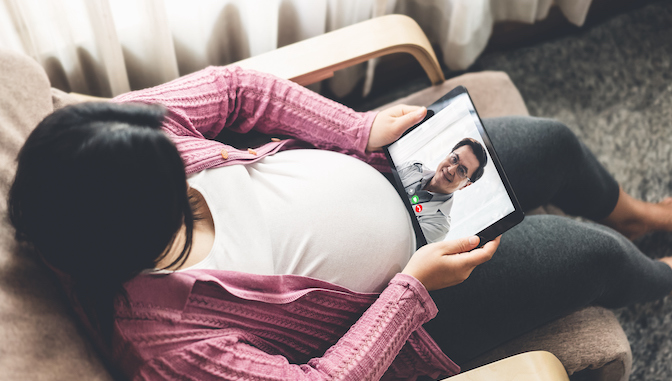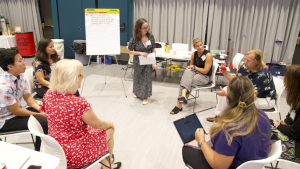
Telehealth proved to be an effective tool during the COVID-19 pandemic, especially for maternal-fetal medicine—more than 50% of those patients utilized telehealth visits.
“Compared to all other subspecialties, we had over 50% of our patients being seen by telehealth visits,” said Men-Jean Lee, Maternal-Fetal Medicine Fellowship Program director at the University of Hawaiʻi at Mānoa John A. Burns School of Medicine (JABSOM).
Leaders from local health plans, hospital systems and the community gathered in August for the 2023 Maternal Telehealth Summit sponsored by JABSOM and the UH Mānoa Pacific Basin Telehealth Resource Center to learn how to make telehealth even more effective for rural areas across the state.
“We want this to be sustainable. Telehealth is just the intersection of healthcare, health policy, social determinants and social science,” Lee said. “There are a lot of barriers for our pregnant patients coming from the neighbor islands to fly over. They would have to take a whole day out of work in order to fly to Honolulu. They might have to find childcare for their children.”
How maternal telehealth works
Under the guidance of a medical professional using innovative technology, maternal telehealth allows patients to stay home—even for ultrasounds, which traditionally required an in-person visit.
“An ultrasound probe can be attached to a cell phone or an iPad,” Lee explained. “We then have a medic or a mobile technician do the ‘street ultrasound’ by meeting the patient where they’re at. That could be at their home. We also serve the houseless population, which could be at their tent.”

The physician would connect with the medical professional on the ground via a computer or tablet and guide them as they performed the ultrasound. These virtual exams aren’t just reserved for ultrasounds.
“We’ve done telehealth counseling for diabetes and hypertension outside of a gas station in somebody’s car,” Lee recalls. “We’ve taught patients how to use finger sticks and how to inject themselves with insulin totally by telehealth. Now, those women who cannot fly to Honolulu can have all this extra diabetes teaching back on their neighbor islands.”
Looking to the future
As telehealth expands in Hawaiʻi, those attending the summit called for more access to technology and more medical professionals who act as the link between physician and patient.
“If the appointment is straightforward, it can just be me and the patient talking over Zoom,” Lee said. “For the more complex cases, we need telehealth navigators to go into the field and bring that technology to the patient. This is that hybrid model where we do need a second human being with some basic medical training that knows how to connect up to the subspecialist at the home base to triage which patients need to come in and which ones can stay home.”
Looking ahead, more digital navigators are being hired through a partnership with University Health Partners. Hawaiʻi Libraries are also getting involved by setting up telehealth kiosks in libraries across the state for patients to visit and conduct their telehealth appointments.
Lee said this partnership is crucial because it aids in the digital divide that plagues many rural areas.
“We know libraries will have good broadband access. The librarians have agreed to be the digital navigators for the patient to help them connect with their physicians and providers,” Lee said.

